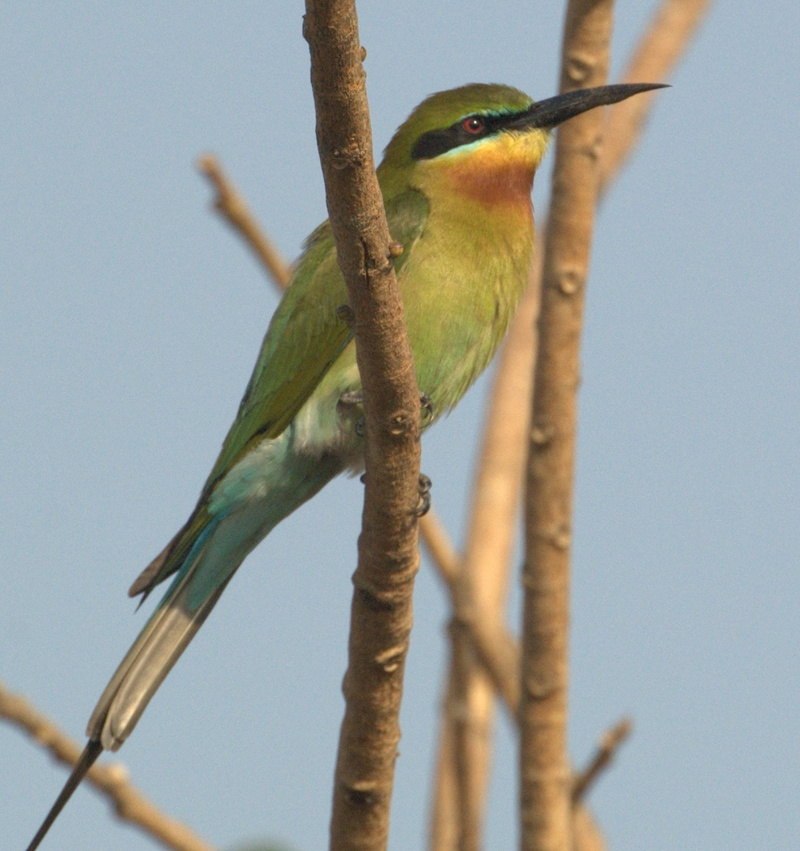Blue-tailed Bee-eater (Merops philippinus) - Wiki Blue-tailed Bee-eater
From Wikipedia, the free encyclopedia
[Photo] Blue-tailed Bee-eater (Merops philippinus), Mulund, Mumbai. Date February 2007. Author Ravi Vaidyanathan
The Blue-tailed Bee-eater, Merops philippinus is a near passerine bird in the bee-eater family Meropidae. It breeds in southeastern Asia. It is strongly migratory.
This species is sometimes considered to be conspecific with the Blue-cheeked Bee-eater, M. persicus.
This species, like other bee-eaters, is a richly-coloured, slender bird. It is predominantly green; its face has a narrow blue patch with a black eye stripe, and a yellow and brown throat; the tail is blue and the beak is black. It can reach a length of 23-26 cm, including the two elongated central tail feathers. Sexes are alike.
This is a bird which breeds in sub-tropical open country, such as farmland, parks or ricefields. It is most often seen near large waterbodies. Like other bee-eaters it predominantly eats insects, especially bees, wasps and hornets, which are caught in the air by sorties from an open perch.This species probably takes bees and dragonflies in roughly equal numbers. The insect that are caught are beaten on the perch to kill and break the exoskeleton. This habit is seen in many other members of the coraciiformes order.
These bee-eaters are gregarious, nesting colonially in sandy banks or open flat areas. They make a relatively long tunnel in which the 5 to 7 spherical white eggs are laid. Both the male and the female take care of the eggs. These birds also feed and roost communally. The call is similar to that of the European Bee-eater.
http://en.wikipedia.org/wiki/Blue-tailed_Bee-eater
| The text in this page is based on the copyrighted Wikipedia article shown in above URL. It is used under the GNU Free Documentation License. You may redistribute it, verbatim or modified, providing that you comply with the terms of the GFDL. |
